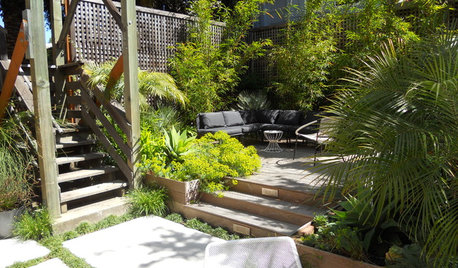Last fall, I planted a fatsia japonica in a dappled shade location and it did well until December, when we had an early, unexpected, severe freeze. The plant just "crumped"; its leaves turned yellow and stems bent and I thought it was dead, but had heard they're fairly hardy so I didn't cut it all back until spring. All that was left were two sorry looking 1/2 inch diameter twigs sticking out of the ground. I was about to replace it when I scraped the roots under one of the twigs and found green! However, it's now June and though the green on the roots remains, there is nothing happening above the ground. The dead twigs are about 4 inches long and definitely not showing any signs of life. Is there hope for this plant or should I give up? It was a good sized pot; 1 gallon I think, so if the roots are alive I'll give it a chance. Would it help to cut off the "twigs", or feed it? any ideas? thanks so much. P.








JohnnieB
Las_Palmas_Norte
Related Professionals
Tempe Landscape Architects & Landscape Designers · Ballwin Landscape Architects & Landscape Designers · Manchester Landscape Contractors · Centereach Landscape Contractors · Mount Sinai Landscape Contractors · Tustin Landscape Contractors · Shafter Landscape Contractors · Laguna Niguel Carpenters · Poway Carpenters · Walker Carpenters · Bellingham General Contractors · Coronado General Contractors · Havre de Grace General Contractors · Selma General Contractors · Toledo General Contractorspattig_ncOriginal Author
JohnnieB
User